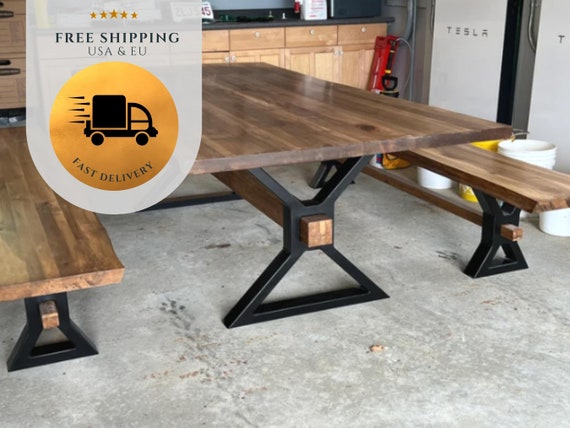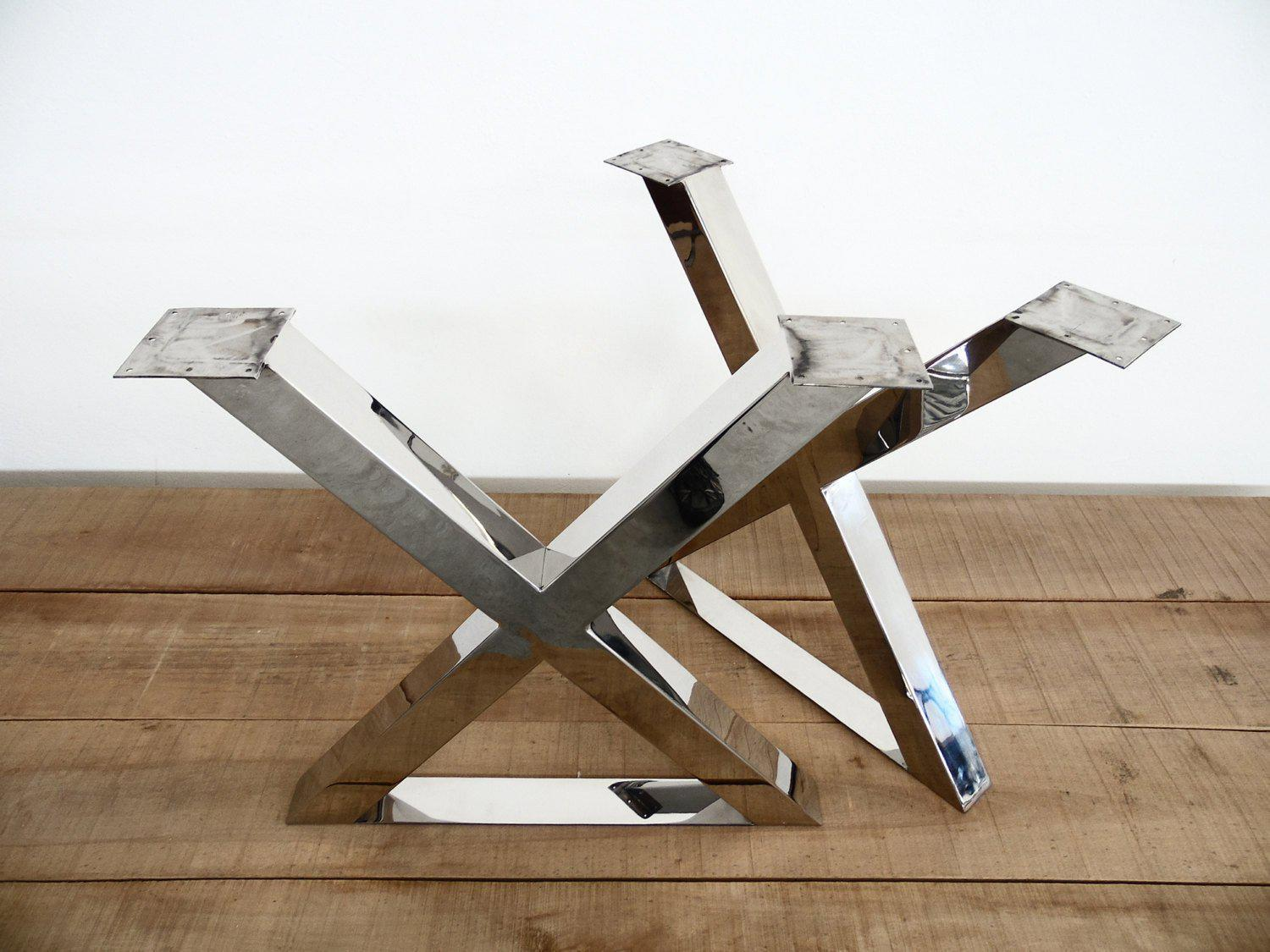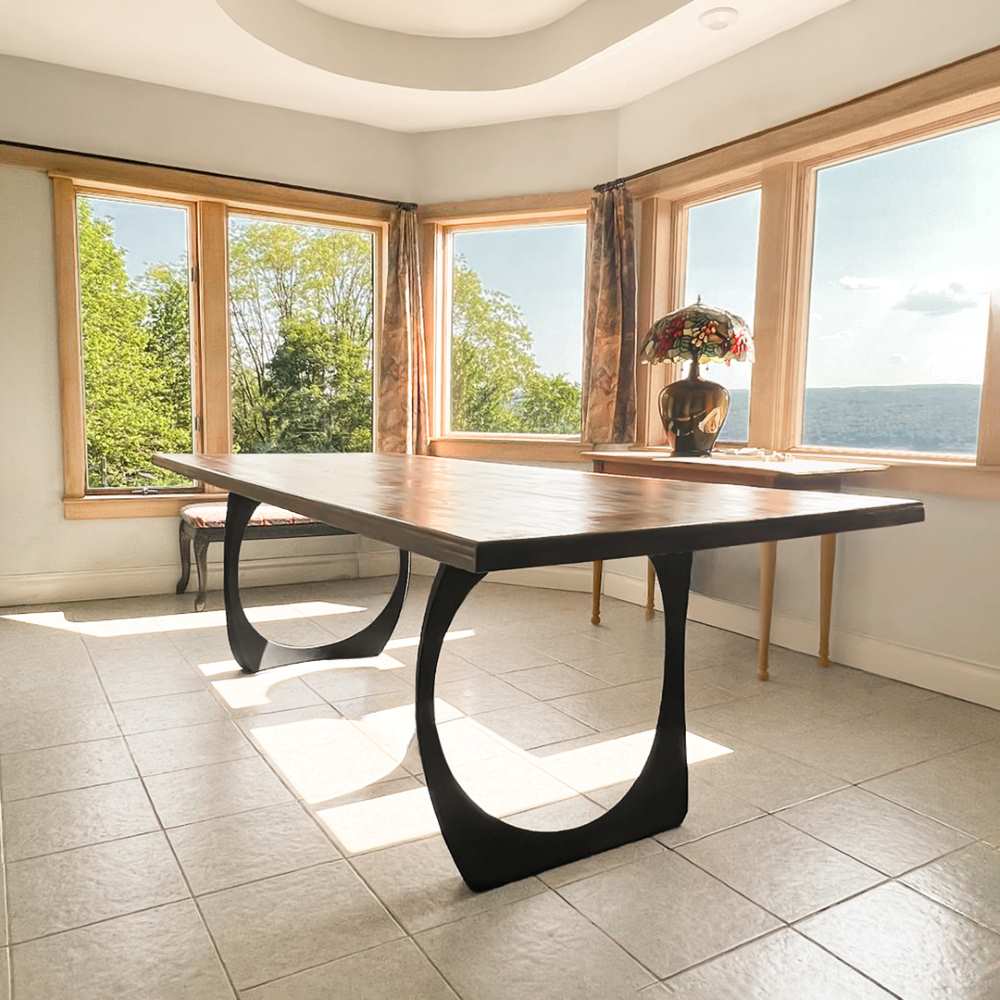Simple Steps to Replacing Old Dining Room Table Legs with New Ones
Just How to Choose the Perfect Dining-room Table Legs for Your Home Decoration
Selecting the optimal eating area table legs is a nuanced process that needs mindful factor to consider of numerous elements, including your room restraints, visual preferences, and sensible requirements. The interaction between measurements, designs, and products can substantially affect the setting of your eating location, making it important to approach this choice carefully.
Assess Your Eating Room
Examining your dining space is important for picking the right table legs that complement both appearances and performance. Begin by gauging the dimensions of your dining location, consisting of ceiling height, floor space, and distance to other furniture. This information will assist identify the ideal size and elevation of your table, which straight affects the selection of table legs.
Following, consider the style and design of your dining space. For circumstances, an open-concept layout might gain from table legs that supply visual lightness, such as slender steel or acrylic options. On the other hand, a more typical setting might call for durable wood legs that offer a sense of permanence.
Examine the existing color palette and materials in your dining location. Harmonizing the table legs with these elements produces a cohesive appearance that enhances the general design. In addition, assume regarding the functionality needed in your room. If you often host big celebrations, consider legs that give additional assistance and security.
Eventually, a detailed evaluation of your eating space will certainly guide you in making an educated decision, making certain that your table legs not just enhance the aesthetic allure but additionally offer useful purposes.
Consider Your Style Preferences
When selecting dining-room table legs, it is important to mirror on your personal design choices, as they substantially affect the overall aesthetic of your eating area. Your selection of table legs can either complement or comparison with existing decor, making it essential to straighten them with your favored interior style style.
If your home leans towards a modern visual, think about sleek steel or minimalist wood legs that provide a clean, clean look. For a more typical technique, ornate wood legs with elaborate makings can include a touch of sophistication and refinement. Industrial styles take advantage of durable, basic materials such as redeemed timber and steel mixes, reflecting a rugged appeal.
Additionally, farmhouse and rustic styles often favor sturdy, chunky legs that evoke a sense of heat and comfort. Alternatively, if your decoration is diverse, you could choose unusual shapes or a mix of products to produce aesthetic interest.

Evaluate Product Options
The option of product for dining space table legs plays a critical duty in both sturdiness and visual appeal. Usual products consist of wood, steel, and composite alternatives, each offering distinct qualities that can affect the general appearance and long life of your table.
Wood is a traditional option, recognized for its heat and versatility. Hardwoods like oak and walnut supply extraordinary strength and can be ended up in numerous spots to match any kind of decor. However, softwoods like ache are much more vulnerable to dents and scratches, making them much less perfect for high-traffic locations.
Metal legs, frequently crafted from steel or light weight aluminum, emanate modernity and commercial appeal. They are very resilient and immune to put on, making them appropriate for households with kids or constant gatherings (dining room table legs). Additionally, steel can be finished in different shades, improving the personalization opportunities
Composite materials, such as MDF or laminate, offer cost and varied styles. While normally less sturdy than strong wood or metal, they can still offer an elegant appearance and are usually very easy to preserve.
Eventually, the material you select ought to line up with your way of life, aesthetic choices, and the degree of usage your table will experience.
Determine Elevation and Size
Choosing the ideal elevation and dimension for your dining-room table is necessary for both performance and convenience. The web conventional elevation for dining tables generally varies from 28 to 30 inches, allowing adequate legroom for most individuals when seated. It is important to think about the dimensions of your dining room and the types of chairs you prepare to use.

Additionally, consider the percentages of your dining-room. A larger table in a sizable location can develop a grand ambiance, while a smaller table functions well in more intimate setups. Eventually, the right elevation and dimension will certainly harmonize with your general design and improve the eating experience for you and your guests.
Explore Modification Opportunities

Additionally, the design of the legs can be tailored to fit different styles, such as rustic, contemporary, or industrial. For example, conical legs can evoke a mid-century modern feeling, while chunky, block-style legs may reverberate with standard or farmhouse decoration.
Homeowners can also discover color coatings, from natural timber discolorations to paint, enabling them to match or comparison with the tabletop and surrounding style.
Moreover, leg height can be adapted to accommodate particular seating arrangements or personal choices, improving both convenience and performance.
Finally, one-of-a-kind embellishments, such as carvings or decorative braces, can further customize the table legs, making the eating experience not simply a declaration yet a dish item in the home. By taking into consideration these helpful site customization choices, home owners can create an eating area table that truly reflects their uniqueness.
Final Thought
Selecting the ideal dining-room table legs needs careful factor to consider of different elements, including the measurements of the eating space, design choices, material sturdiness, and desired elevation. Customization options additionally improve the capability to accomplish a natural aesthetic that matches the total design. By methodically assessing these components, property owners can guarantee that the picked table legs not just fulfill functional demands yet also add positively to the dining experience and ambiance of the home.
Choosing the ideal dining room table legs is a nuanced procedure that requires mindful consideration of numerous elements, including your site space restraints, aesthetic choices, and sensible requirements.Evaluating your dining space is critical for selecting the right table legs that match both looks and capability.When identifying size, determine the area where the table will certainly be placed to guarantee it fits pleasantly, permitting for at the very least 36 inches of clearance around the table for simple motion. A bigger table in a spacious location can produce a grand atmosphere, while a smaller table works well in even more intimate setups.Choosing the ideal eating area table legs requires careful factor to consider of numerous factors, including the dimensions of the eating room, design choices, material resilience, and desired elevation.